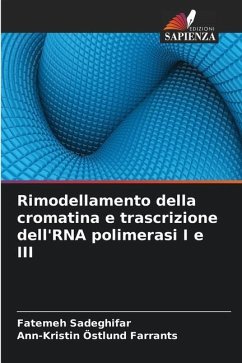
Role of THAP-11 in the Transcriptional Regulation of Human MYC Locus
Study of Chromatin conformation in the Human MYC LOCUS
Versandkostenfrei!
Versandfertig in 6-10 Tagen
23,99 €
inkl. MwSt.

PAYBACK Punkte
12 °P sammeln!
The rise of new technology allowed to study the Human genome from new point of view, and in particulary on the role of the structural organization of the genes correlated with their function. The chromosome conformation capture method, developed in the Dekker laboratory in 2002, has been invaluable in studying chromatin interactions at a resolution surpassing that of light microscopy, for example in the detection of functional contacts between enhancers and promoters. This tecnique allow to shedding light on the three-dimensional organization of chromosomes and the dinamic structure of them. I...
The rise of new technology allowed to study the Human genome from new point of view, and in particulary on the role of the structural organization of the genes correlated with their function. The chromosome conformation capture method, developed in the Dekker laboratory in 2002, has been invaluable in studying chromatin interactions at a resolution surpassing that of light microscopy, for example in the detection of functional contacts between enhancers and promoters. This tecnique allow to shedding light on the three-dimensional organization of chromosomes and the dinamic structure of them. In this thesis this approch is utilized to study the role of chromatin conformation in the Human MYC locus, and its role in the expression of the oncogene MYC. However, these methods present significant technical and bioinformatic challenges to consider at the start of the project: several controls are needed to obtain meaningful data. Furthermore a FISH (Fluorescence in situ Hibridization) is used to confirm the transcriptional state of the Chromatine in U937 cells.












